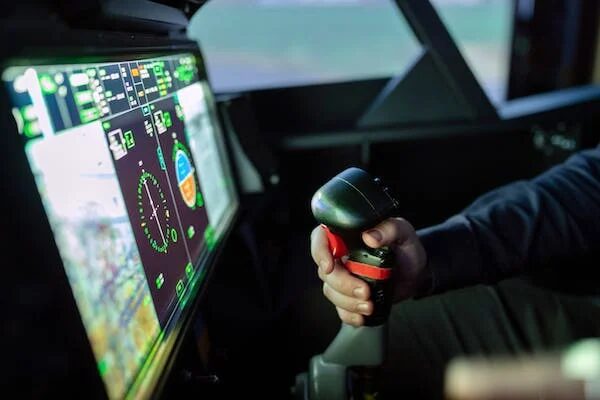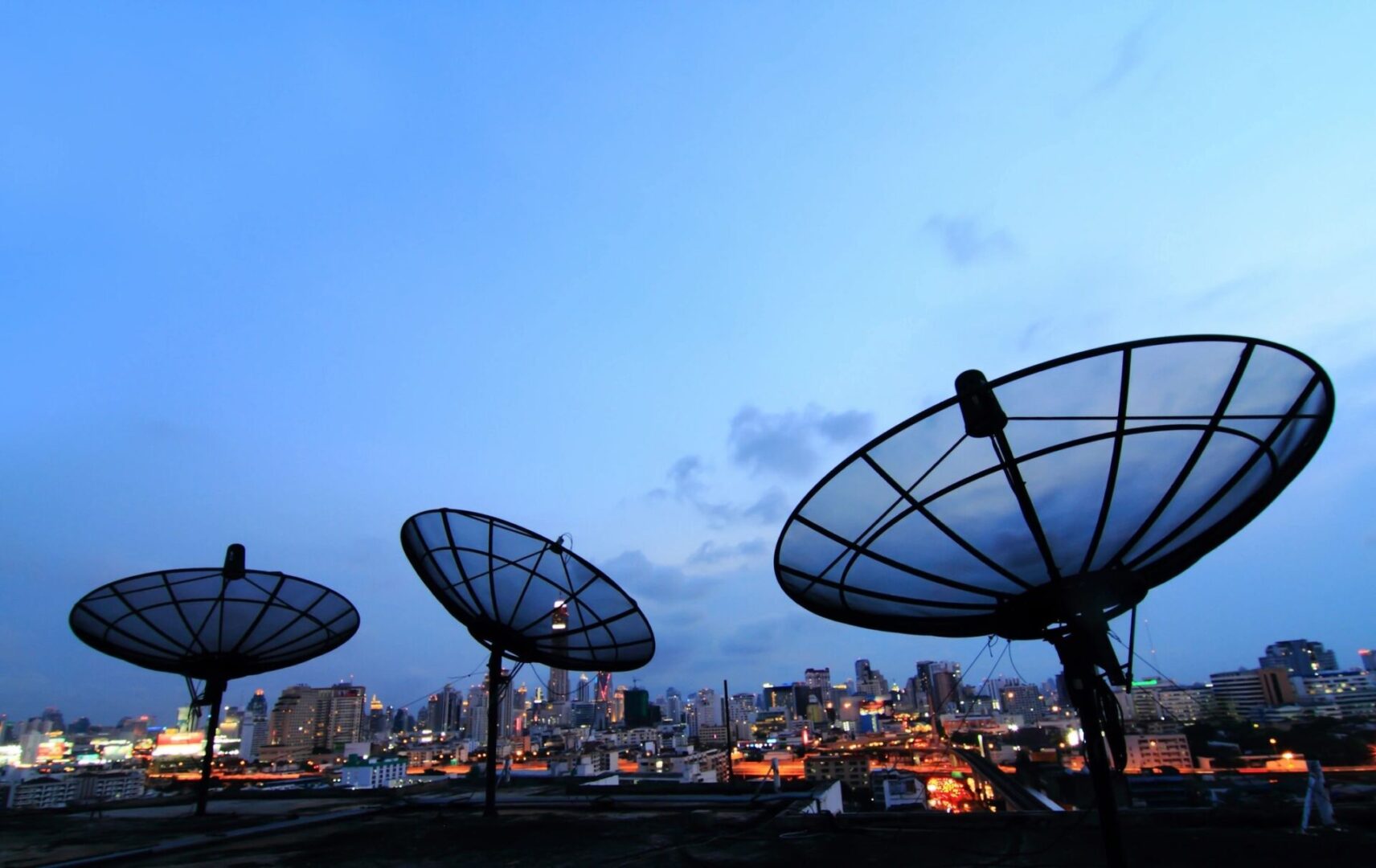SCS Education
The Society for Modeling and Simulation International (SCS) plays an integral role in helping to spread Modeling and Simulation throughout the world. Modeling and Simulation is now a part of many areas of interest with many university programs focusing on the subject. There are now many organizations whose area of focus is Modeling and Simulation.
Modeling and Simulation Areas of Interest

Model Representation Simulation
Discrete M&S uses a model built in terms of logic where the simulation time is represented as a discrete variable. Discrete M&S is typically used in disciplines such as computer science, systems engineering, industrial engineering, operations research, business, civil engineering, and management science. This type of M&S is commonly referred to as Discrete Event Simulation.
Continuous M&S uses a model consisting of differential equations where the simulation time is represented as a continuous variable. Continuous M&S is typically used in disciplines such as aerospace engineering, computational fluid dynamics, computational solid mechanics, computational engineering, computational physics, materials science and engineering, and heat transfer.
Monte Carlo M&S uses a model built based on statistical random sampling. The model typically does not represent time-varying relationships. Monte Carlo M&S is commonly used in disciplines such as Chemistry, Computational Engineering, Financial Probabilistic Modeling, Mathematics, Nuclear Engineering, (Computational, Nuclear, Statistical) Physics, and Reliability Engineering.
System Dynamics M&S uses a model representing cause-and-effect relationships in terms of causal-loop diagrams, flow diagrams with levels, rates and equations. The equations are used for simulating system behavior. System Dynamics M&S is typically used in disciplines such as Business, Decision Sciences, Economics, Management, Organizational Sciences, Policy Studies, Social Sciences, and System Sciences.
Gaming-based M&S uses humans as part of its model. It is typically used for training. For example: Management Games are performed to train managers for a business; War Gaming is performed to train military commanders; Video Games are simulations intended for entertainment, educational or training purposes. Gaming-based M&S is typically used in disciplines such as Business, Education, Management, and Training.
Agent-based M&S uses a model representing agents and their interactions. An "agent" is intelligent, adaptive, autonomous, goal/self-directed entity that has the ability to learn, and can change its behaviors based on experience. Agent-based M&S draws characteristics from AI-based M&S and object-oriented M&S.
Artificial Intelligence (AI) based M&S uses a model intended to represent human intelligence or knowledge. An AI-based simulation model typically mimics human intelligence such as reasoning, learning, perception, planning, language comprehension, problem-solving, and decision making. Rule-based knowledge representation is commonly used for building AI-based simulation models. An Expert System is an example of an AI-based simulation of some set of knowledge, typically constructed using rule-based knowledge representation.
Virtual Reality based M&S uses modeling and simulation to enable a person to interact with a three-dimensional visual representation of a real or imaginary entity or system in an immersive, multi-sensory, and interactive manner. The user wears goggles, headsets, gloves, or body suits to interact with the simulation. Motion sensors pick up the user’s movements and adjust his or her view and action accordingly usually in real-time. Virtual Reality based M&S is typically used in disciplines such as Architecture, Computer-aided Design and Manufacturing, Education, Entertainment (Movies, Video Games), Human-Computer Interaction, Medical Science, Real Estate, and Training.
Model execution simulation
Distributed M&S executes its model parts (e.g., federation of models, submodels, model components, subcomputations) on geographically or locally distributed computers. Distributed M&S enables geographically dispersed people to interact with the running simulation typically for training purposes.
Parallel M&S executes its model parts (e.g., federation of models, submodels, model components, subcomputations) on different processors of the same computer for the purpose of achieving faster execution time.
Web-based M&S is characterized by the M&S application being accessed over a network by using the HTTP/HTTPS. More and more web-based M&S simulations are probably using HTTPS to prevent external electronic snooping (i.e. "man-in-the-middle actions) and protocol for communication between the client computer and the M&S application running on a server computer.


Model composition simulation
A Live Exercise is conducted in real-time in a synthetic environment consisting of hardware, software, and humans under simulated scenarios for objectives such as training, operational test and evaluation, interoperability assessment, technology assessment, or acquisition.
A Live Experimentation is conducted in real-time in a synthetic environment consisting of hardware, software, and humans under simulated scenarios for objectives such as operational effectiveness assessment, interoperability assessment, or technology (readiness) assessment.
A Live Demonstration is conducted in real-time in a synthetic environment consisting of hardware, software, and humans under simulated scenarios for the purpose of demonstrating that a complex system possesses a set of quality characteristics.
A Live Trial is conducted in real-time in a synthetic environment consisting of hardware, software, and humans under simulated scenarios for objectives such as interoperability assessment or technology assessment.
Loop simulation
Hardware-in-the-loop M&S can be viewed as Simulation-based hardware evaluation. A hardware system can be operated under simulated input conditions for the purpose of evaluating how well the hardware functions under such input conditions. For example, a space vehicle can be operated under simulated input conditions for the purpose of evaluating the vehicle’s autopilot mode. Hardware-in-the-loop M&S is a cost-effective method for evaluating a complex, mission-critical hardware before it is used in the real world.
Human-in-the-loop M&S is also called Simulation-based training. A simulation model of a system, e.g., airplane, air traffic control center, emergency management plan, or military operation is developed for the purpose of training people. Trainees interact with the visual simulation model for the purpose of learning e.g. how to fly an airplane using a flight simulation; how to control air traffic at an airport; how to manage an emergency in response to a disaster; how to make military decisions. Human-in-the-loop M&S can also be used as a cost-effective method for evaluating human performance and behavior for a proposed system design.
Software-in-the-loop can be viewed as Simulation-based Software Evaluation. A software system can be executed under simulated input conditions for the purpose of evaluating how well the software system functions under such input conditions. For example, the software used to display the common operating picture (COP) in a combat operation on a handheld computer can be executed under simulated input data (e.g., video, voice, images, text) received from many different sources for the purpose of evaluating how well the software satisfies its requirements. Software-in-the-loop M&S is a cost-effective method for evaluating a complex, mission-critical software system before it is used in the real world.

Modeling and Simulation Education Degree Programs
- Bangor University, UK - Ph.D. - Medical Visualization and Simulation
- Bergische Universität Wuppertal, Germany - M.Sc. - Computer Simulation in Science
- Capital University & Technology, Pakistan - B.S. - Simulation and Modelling
- Cranfield University, UK - M.Sc. - Defence Simulation and Modelling
- Embry-Riddle Aeronautical University, USA - B.S. - Simulation, Science, Games and Animation
- Full Sail University, USA - B.S. - Simulation and Visualization
- Georgia Tech Professional Education, USA - B.S. - Modeling and Simulation for Systems Engineering
- Indian River State College, USA - B.S. - M&S Concentration
- KTH Royal Institute of Technology (Sweden) - Computer Simulations for Science and Engineering
- Technical University of Berlin (Germany) Masters - Computer Simulations for Science and Engineering
- Delft University of Technology (Netherlands) Masters - Computer Simulations for Science and Engineering
- Nanyang Technological University, Singapore - B.S. - Research Areas
- Naval Postgraduate School, USA - M.S., Ph.D. - Modeling, Virtual Environments and Simulation (MOVES)
- Norwegian University of Science and Technology, Norway - M.S. - Simulation and Visualization
- Old Dominion University, USA - B.S., M.S., Ph.D. - B.S. in M&S Engineering, M.S. in M&S, Ph.D. in M&S
- Purdue University Northwest, USA - M.S. - Modeling, Simulation and Visualization
- Roger Williams University, USA - B.S. - Modeling and Simulation
- RWTH Aachen University (supported by the German Research School for Simulation Sciences), Germany - M.Sc. - Simulation Sciences
- Seminole State College of Florida, Florida - B.S - Computer Programming & Analysis
- Singapore Institute of Technology, Singapore - B.S. - Computer Science in Real-Time Interactive Simulation
- Swansea University, UK - MSc., MRes - Computer Modelling in Engineering
- University of Colorado, Boulder, USA - MSProf. - Computational Modeling, Simulation & Analysis
- University College Dublin, Ireland - M.Sc. - Simulation Science
- University of Alabama in Huntsville, USA - M.S., Ph.D. - M&S
- University of Central Florida, USA - M.S., Ph.D. - M&S
- University of Pittsburgh, USA - Ph.D. - Computational Modeling and Simulation
- University of Southern California, USA - M.S. - Computer Science – High Performance Computing and Simulation
- University of Tulsa, USA - B.S. - Computer Simulation and Gaming
- University of Warwick, UK - B.S., Ph.D. - Systems Modelling &Simulation and Modelling of Heterogeneous Systems

Modeling and Simulation Societies, Associations, and Education Organizations
- ASIM - German Simulation Society
- Association for Business Simulation and Experiential Learning (ABSEL)
- Association for Information Systems (AIS) Special Interest Group on Modeling and Simulation (SIGMAS)
- Association for the Advancement of Modelling and Simulation Techniques in Enterprises
- ACM Special Interest Group on Simulation and Modeling (SIGSIM)
- Dutch Benelux Simulation Society (DBSS)
- Dutch Society for Simulation in Healthcare (DSSH)
- European Multidisciplinary Society for Modelling and Simulation Technology (EUROSIS)
- Federation of Asia Simulation Societies (ASIASIM)
- Federation of European Simulation Societies (EUROSIM)
- Flight Simulation Society (FSSoc)
- Hong Kong Society for Simulation in Healthcare (HKSSIH)
- Institute for Operations Research and the Management Sciences (INFORMS)
- International Association for Mathematics and Computers in Simulation (IMACS)
- International Marine Simulator Forum (IMSF)
- International Pediatric Simulation Society (IPSS)
- International Simulation and Gaming Association (ISAGA)
- Japan Society for Simulation Technology (JSST)
- McLeod Institute of Simulation Sciences (MISS)
- Modeling and Simulation Society of Australia and New Zealand (MSSANZ)
- National Center for Simulation
- National Training and Simulation Association (NTSA)
- NATO Modelling and Simulation Group (NMSG)
- North American Simulation and Gaming Association (NASAGA)
- Operational Research Society Simulation Special Interest Group
- Pan Asia Simulation Society in Healthcare (PASSH)
- Scandinavian Simulation Society (SIMS)
- Simulation Australasia
- Simulation Interoperability Standards Organization (SISO)
- Society for Simulation in Healthcare
- Society for Simulation in Healthcare Singapore
- Society for the Advancement of Games and Simulations in Education and Training (SAGSET)
- Society for the Study of Artificial Intelligence and Simulation of Behaviour (AISB)
- Society in Europe for Simulation Applied to Medicine (SESAM)
- Swiss Austrian German Simulation and Gaming Association (SAGSAGA)
- System Dynamics Society
- Virginia Modeling, Analysis, and Simulation Center (VMASC)
- Air Force Agency for Modeling and Simulation (AFAMS)
- Army Modeling and Simulation Office (AMSO)
- Marine Corps Modeling and Simulation Management Office (MCMSMO)
- Modeling and Simulation Coordination Office (MSCO)
- Navy Modeling and Simulation Office (NMSO)


